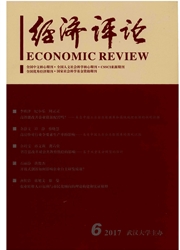

 中文摘要:
中文摘要:
传统的内生经济增长理论通常假定代表性企业,而实际上企业是异质性的,它们的规模分布极不均衡,即大量小规模企业与少量大规模企业并存。近年来,学者们构建了一系列满足企业规模动态特征的经济增长模型,结果表明单个企业创新、知识外溢和异质性企业之间的资源再配置共同推动了经济增长,而传统内生增长理论则忽略了异质企业之间资源再配置的作用。本文根据影响企业规模的因素将文献分为三类,分别为外生冲击和外生技术进步驱动企业规模变化的文献、内生技术创新驱动企业规模变化的文献以及其他因素驱动企业规模变化的文献。这些研究使得从微观企业增长到宏观经济增长之间的联系变得更为清晰,对发展中国家的经济增长具有重要的政策涵义。
 英文摘要:
英文摘要:
Scholars usually assume there is a representative firm in traditional endogenous growth theory. However, firms are heterogeneous actually. Firm sizes are highly skew that a few large firms coexist with large numbers of small firms. Recently, scholars have constructed a series of economic growth models,which are consistent with empirical characteristics of firm dynamics. Their results show that firm innovation, knowledge spillover and reallocation of resources among heterogeneous firms promote economic growth jointly. However,the role of reallocation of resources among heterogeneous firms is ignored in traditional endogenous growth theory. According to the factors that affect firm scale, these studies can be divided into three categories respectively, literatures in which exogenous shocks and exogenous technological progress drive firm scale to change, literatures in which endogenous technological innovation drive firm scale to change, and literatures in which other factors drive firm scale to change. These researches made the linkages between micro firm growth and macroeconomic growth become more clear, and have important policy implications to the economic growth of developing countries.
 同期刊论文项目
同期刊论文项目
 同项目期刊论文
同项目期刊论文
 期刊信息
期刊信息
